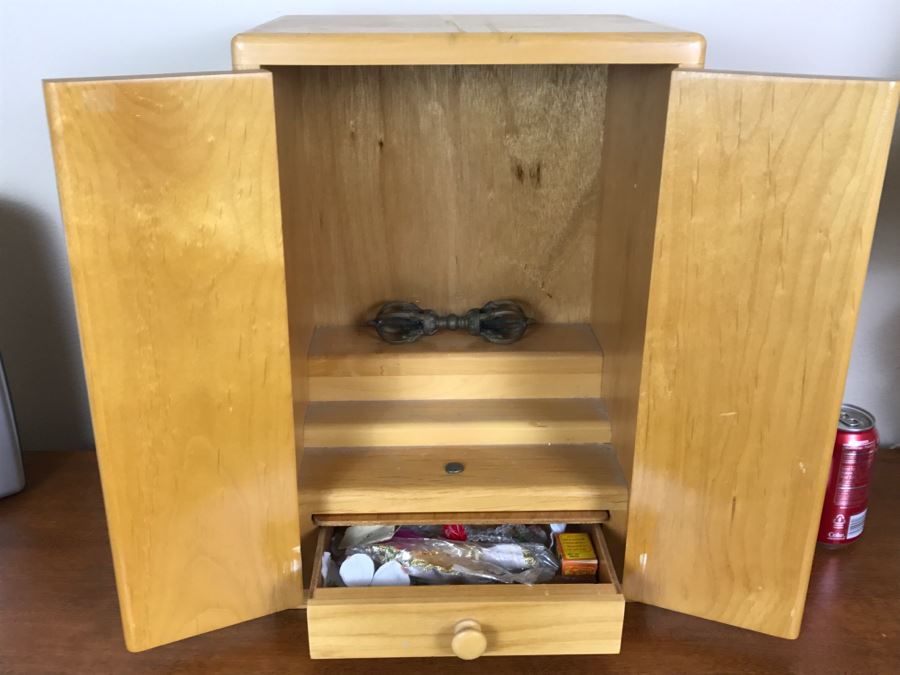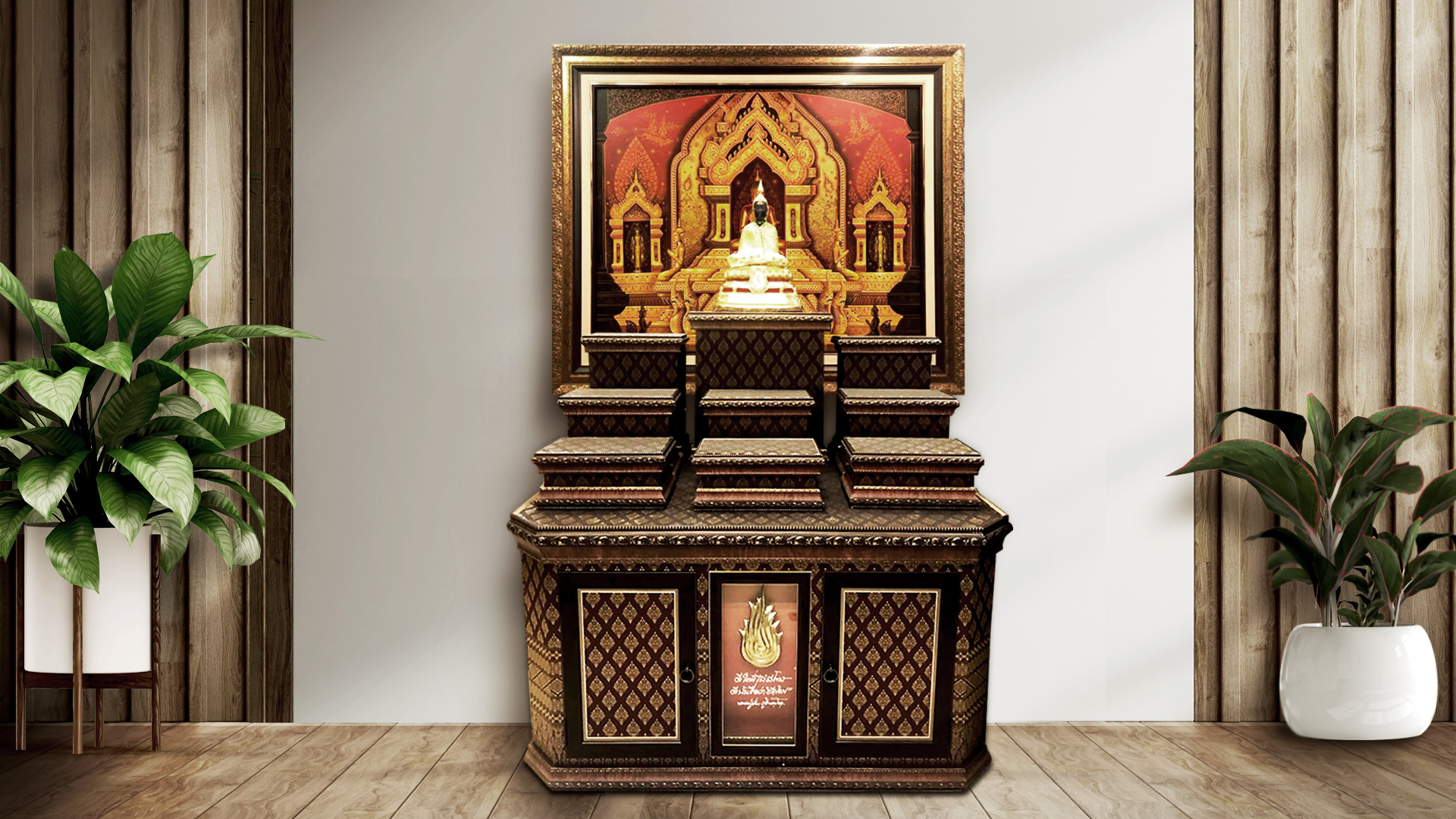The Significance of Wooden Buddhist Altar Cabinets

Wooden Buddhist altar cabinets are more than just pieces of furniture; they are sacred spaces that embody centuries of tradition and spiritual devotion. These cabinets serve as a focal point for Buddhist practice, offering a dedicated area for prayer, meditation, and connecting with the divine.
The Historical and Cultural Significance of Wooden Buddhist Altar Cabinets
The use of altar cabinets in Buddhist practice has a rich and varied history, evolving alongside different traditions and cultural influences. In ancient India, where Buddhism originated, altars were often simple, consisting of a platform or a raised area adorned with flowers, incense, and offerings. Over time, as Buddhism spread throughout Asia, altar cabinets became more elaborate and ornate, reflecting the artistic styles and materials of each region.
In China, for example, wooden altar cabinets often feature intricate carvings and lacquerwork, reflecting the country’s rich artistic heritage. In Japan, altar cabinets, known as “butsudan,” are typically made of camphorwood and feature a distinctive design that emphasizes simplicity and elegance.
The Symbolism and Spiritual Meaning Associated with the Placement of Items on the Altar
The placement of items on a Buddhist altar holds profound symbolic meaning, representing different aspects of Buddhist teachings and practice.
- Buddha Image: A central element of the altar is the Buddha image, which serves as a visual reminder of the Buddha’s teachings and the path to enlightenment. The Buddha image is often placed in the center of the altar, symbolizing the importance of cultivating inner peace and wisdom.
- Incense Burner: Incense is burned as an offering to the Buddha, symbolizing the purification of the mind and the release of negative emotions. The incense burner is typically placed in front of the Buddha image, representing the offering of our devotion and aspirations.
- Candles: Candles are lit on the altar to symbolize the light of wisdom and the dispelling of darkness. The light of the candles represents the illumination of the mind and the path to enlightenment.
- Flowers: Flowers are offered to the Buddha as a symbol of beauty, gratitude, and impermanence. The beauty of the flowers reminds us of the impermanence of life and the importance of appreciating the present moment.
- Offering Bowl: A bowl filled with water, fruit, or other offerings is placed on the altar as a symbol of generosity and compassion. The offering bowl represents our willingness to share our resources with others and to cultivate a spirit of generosity.
Different Types of Wooden Buddhist Altar Cabinets
Wooden Buddhist altar cabinets come in a wide variety of styles, each reflecting the unique cultural and artistic traditions of different regions.
- Chinese Altar Cabinets: Chinese altar cabinets are often characterized by their intricate carvings and lacquerwork. They are typically made of hardwood, such as rosewood or mahogany, and feature elaborate designs that often depict scenes from Buddhist mythology or history.
- Japanese Butsudan: Japanese butsudan are typically made of camphorwood and feature a distinctive design that emphasizes simplicity and elegance. They are often decorated with gold leaf and lacquerwork, and they are usually placed in a special room or alcove dedicated to Buddhist practice.
- Tibetan Altar Cabinets: Tibetan altar cabinets are often made of wood, metal, or a combination of both. They are typically decorated with intricate carvings, paintings, and other embellishments, and they are often used to display thangkas, sacred Buddhist paintings.
- Thai Altar Cabinets: Thai altar cabinets are often made of teakwood and feature a distinctive design that is influenced by both Buddhist and Hindu traditions. They are often decorated with gold leaf and lacquerwork, and they are usually placed in a temple or a home shrine.
Design and Construction of Wooden Buddhist Altar Cabinets

Crafting a wooden Buddhist altar cabinet is an art form that blends aesthetics and functionality, reflecting the reverence and respect for the spiritual realm. These cabinets are not merely storage spaces but sacred vessels designed to enhance the meditative experience.
Materials Used in Crafting Wooden Buddhist Altar Cabinets
The materials used in constructing these cabinets are carefully chosen for their durability, aesthetic appeal, and symbolic significance.
- Wood Species: Traditional choices include hardwoods like teak, mahogany, and rosewood, known for their strength, rich color, and natural beauty. These woods are often preferred for their ability to withstand the test of time and maintain their elegance over generations.
- Finishes: The finish applied to the wood plays a crucial role in enhancing its appearance and protecting it from wear and tear. Common finishes include natural oils, waxes, and lacquers, each contributing a unique sheen and level of protection.
Design Elements of Wooden Buddhist Altar Cabinets
The design of a wooden Buddhist altar cabinet is a testament to the intricate craftsmanship and attention to detail that characterize these sacred objects.
- Carvings: Intricate carvings often adorn the cabinet’s surface, depicting auspicious symbols, floral motifs, or scenes from Buddhist scriptures. These carvings are not just decorative but also serve as visual reminders of the principles and teachings of Buddhism.
- Inlays: Inlays, crafted from materials like mother-of-pearl, ivory, or precious metals, add a touch of elegance and refinement to the cabinet’s design. These intricate details enhance the visual appeal and symbolize the richness and complexity of Buddhist teachings.
- Finishes: The finish applied to the wood complements the carvings and inlays, enhancing their beauty and highlighting the natural grain of the wood. Finishes can range from simple, natural oil treatments to elaborate lacquer work, each adding a unique character to the cabinet.
Traditional Techniques and Craftsmanship
The construction of wooden Buddhist altar cabinets is a meticulous process that involves time-honored techniques and skilled craftsmanship.
- Joinery: Traditional joinery techniques, such as mortise and tenon joints, are often employed to create strong and durable connections between the cabinet’s components. These techniques ensure the cabinet’s longevity and structural integrity.
- Carving: The intricate carvings are often executed by hand, requiring patience, precision, and a deep understanding of the symbolism and aesthetics of Buddhist art. This meticulous process reflects the reverence and dedication that goes into creating these sacred objects.
- Finishing: The final stage of the process involves applying the chosen finish, which enhances the wood’s natural beauty and protects it from the elements. The application of the finish requires a skilled hand and an understanding of the properties of the wood and the chosen materials.
The Role of Wooden Buddhist Altar Cabinets in Daily Practice

Wooden Buddhist altar cabinets are more than just decorative pieces; they are central to daily Buddhist practice, serving as a dedicated space for meditation, prayer, and connecting with the teachings. The cabinet’s presence acts as a constant reminder of the path and provides a structured environment for cultivating mindfulness and devotion.
Placement of Items
The arrangement of items within the altar cabinet reflects the principles of balance and harmony. The placement of specific items like statues, scriptures, and offerings holds symbolic significance, enhancing the practice and creating a sacred space.
- Statues: Statues of Buddha, bodhisattvas, or other revered figures are typically placed in the center of the altar cabinet, representing the focal point of devotion. The placement can vary depending on the specific tradition and personal preference.
- Scriptures: Buddhist scriptures, such as the sutras or the Vinaya, are placed near the statues, signifying the importance of teachings in guiding practice. These scriptures serve as a source of inspiration and guidance for daily reflection.
- Offerings: Offerings, such as flowers, incense, candles, or food, are placed on the altar as a gesture of respect and gratitude. These offerings symbolize the practitioner’s dedication and commitment to the path.
Maintaining and Caring for the Altar Cabinet
Maintaining the altar cabinet is an act of reverence and respect for the sacred space it represents. Regular cleaning, dusting, and tending to the offerings demonstrate dedication and mindfulness.
- Cleaning: Dusting the altar cabinet regularly ensures its cleanliness and preserves the beauty of the wooden craftsmanship. This act of cleaning symbolizes purification and the removal of distractions from the mind.
- Offering Care: Fresh flowers should be replaced regularly, and incense should be burned responsibly. The care given to the offerings reflects the practitioner’s commitment to maintaining a sacred space.
- Respectful Treatment: The altar cabinet should be treated with respect, avoiding any unnecessary movement or disturbance. This respect extends to the space itself, acknowledging its significance as a place for spiritual practice.
A wooden Buddhist altar cabinet is a sacred space, holding objects of devotion and reverence. It’s a reminder of the importance of finding peace and order within, much like the practical and stylish baxton studio wood shoe cabinet with top drawer brings order and beauty to a home.
Both pieces, in their own way, reflect a commitment to creating a sanctuary, a place of calm and purpose.
A wooden Buddhist altar cabinet is a beautiful and sacred space for reflection and prayer. It can be a focal point in a room, and adding a comfortable small sofa for bedroom nearby can create a peaceful sanctuary where you can unwind and find inner peace.
The altar cabinet serves as a reminder of your spiritual connection, while the sofa provides a cozy spot to contemplate and connect with your inner self.
